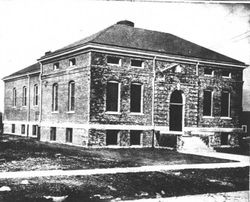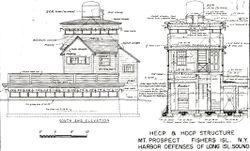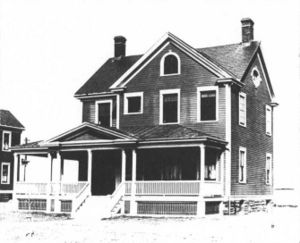Fort H.G. Wright
|
Fort H.G. Wright (1898-1948) - An Endicott Period Coastal Fort first established in 1898 in Suffolk County, New York. Named in G.O. 43, 4 Apr 1900, after MG Horatio G. Wright, U.S. Volunteers, a distinguished officer of the U.S. Civil War, and Chief of Engineers, U.S. Army, 1879-1884. Abandoned in 1948.
Endicott PeriodPart of the Harbor Defense of Long Island Sound.  Construction on the coastal gun batteries of Fort H.G. Wright began in 1898 with three disappearing gun batteries, Battery Butterfield, Battery Barlow (2) and Battery Dutton These three batteries were all accepted for service on the same day, 7 Mar 1901. This first round of Endicott Period batteries was expanded to include Battery Clinton, a 12" mortar battery started in 1900 and completed in 1902. The second set of batteries was begun in 1902-1903 and completed in 1904-1906. These included smaller caliber batteries, Battery Hamilton (2), Battery Marcy, Battery Hoffman and Battery Hoppock. Initial post construction began in earnest in 1900 and by 1902 the small two-company coastal fort was essentially complete with two enlisted 109-man barracks, seven sets of officer quarters, four sets of NCO quarters, and numerous support buildings. The second round of post construction took place in 1908-1911 that expanded the post to accommodate a total of six companies by adding two large double 218-man barracks, seven additional sets of officer quarters, five sets of NCO quarters, and additional support structures including a PX and a larger hospital. In 1913 Fort H.G. Wright was designated the Headquarters of the Harbor Defenses of Long Island Sound.

World War IThe U.S. entry into World War I resulted in a widespread removal of large caliber coastal defense gun tubes for service in Europe. Many of the gun and mortar tubes removed were sent to arsenals for modification and mounting on mobile carriages, both wheeled and railroad. Most of the removed gun tubes never made it to Europe and were either remounted or remained at the arsenals until needed elsewhere. In 1917 Battery Marcy, Battery Hamilton (2) and Battery Barlow (2) were all directed to dismount their guns for service abroad. In 1918 Battery Barlow was ordered to remount its guns but the guns for the two 6" batteries were shipped to Watervliet Arsenal and then to France. Battery Marcy and Battery Hamilton (2) were not rearmed. In May of 1918 four of Battery Clinton mortars were ordered dismounted and prepared for shipment. This left each mortar pit with the two rear mortars, reducing crowding in the pits and the manpower required to salvo the battery. The post expanded during World War I but with temporary buildings. The expansion can be seen in the 1921 plan above. By 1930 most of the temporary WWI buildings were gone. World War II
Current StatusFishers Island, Suffolk County, New York.
Sources:
Links:
Visited: No | |||||||||||||||||||||||||||||||||||||||||||||||||||||||||||||||||||||||||||||||||||||||||||||||||||||||||||||||||||||||||||||||||||||||||||||||||||||||||||||||||||||||||||||||||||||||

